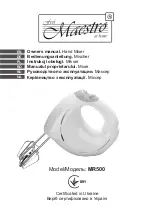
DAS 96-20 Evaluating forages and TMRs using the Penn State Particle Size Separator
6
PARTICLE SIZE EFFECTS ON THE DAIRY COW
___________________________________________________________________________________________________________________________________
The dairy cow's need for increasingly
higher levels of energy have led to diets
relatively high in concentrates. All silage diets
have replaced diets high in long hay in today's
larger herds and more mechanized farms.
However, cows still require adequate fiber in
the ration to function properly. When the
minimum fiber levels are not met, cows often
show one or more of the following metabolic
disorders: reduced total dry matter digestibility,
reduced milk fat percentage, displaced
abomasum, and an increase in the incidence of
rumen parakeratosis, laminitis, acidosis, and fat
cow syndrome. Cows consuming sufficient
NDF with finely chopped forage can also
exhibit the same metabolic disorders as a diet
deficient in fiber.
Adequate forage particle length is
necessary for proper rumen function. Reduced
forage particle size has been shown to decrease
the time spent chewing and cause a trend
toward decreased rumen pH . When cows
spend less time chewing, there is a decrease in
the volume of saliva produced needed to buffer
the rumen.
It has been shown that insufficient particle
size will decrease the rumen acetate to
propionate ratio and pH, which will lower milk
fat percent. When rumen pH falls below 6.0,
the growth of the cellulolytic organisms are
depressed, allowing for an increase in the
propionate producing microbes decreasing the
acetate to propionate ratio.
Reduced forage particle size increases dry
matter intake, decreases digestibility, and
results in less rumen solid retention time. Diets
that have a smaller forage particle size enter
the rumen at a smaller size after initial chewing
and swallowing, and therefore leave the rumen
at a faster rate. The result is an increase in the
rumen turn over rate allowing for an increase
in dry matter intake. Smaller forage particles
spend less time in the rumen for microbial
digestion, thereby reducing digestibility,
particularly fiber digestion.
If rations or forages are too fine in particle
size a small amount of long hay or balage can
make improvements in achieving some long
particles in the ration. Farms feeding 5 or
more pounds of long hay per cow daily would
not likely have problems with overall particle
size. Many farms, however, do not have long
hay as an option. In these situations, the
distribution of the total ration particle size is
likely more important than particles greater
than a certain length.
Particle size analysis is not the end all for
ration problems. It does give a way to
measure this variable and to improve upon the
overall nutrition of the dairy cow. Feeding a
ration containing extremely fine particle size
length with a small amount being greater than
0.75 inches is not recommended. Diets
containing very fine particle size can
predispose cows to rumen acidosis and other
associated problems.
RECOMMENDED FIBER INTAKES
___________________________________________________________________________________________________________________________________
Adequate NDF intake by the dairy cow
is necessary for normal rumen function,
production, and health. A majority of the
NDF in the ration must be in the form of
forage NDF along with sufficient ration
particle size to maintain a healthy rumen
environment.
Under conditions where particle size is
marginal, special attention must be paid to
maintaining adequate levels of total NDF
and forage NDF intakes (Table 3 and 4).









































